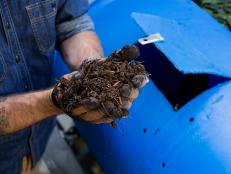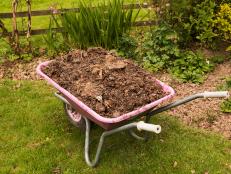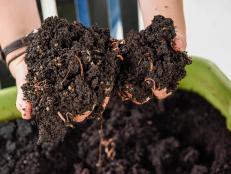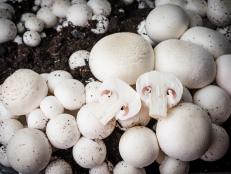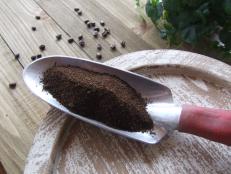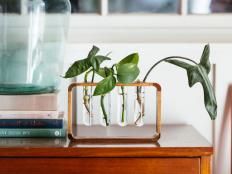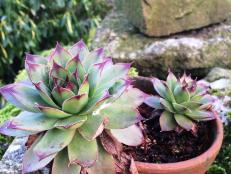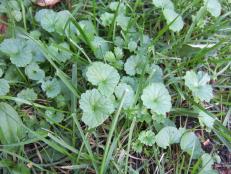Making Compost
This crumbly, soil-like material improves soil texture by increasing the drainage of heavy clay soils and the water and nutrient retention of light, sandy soils.
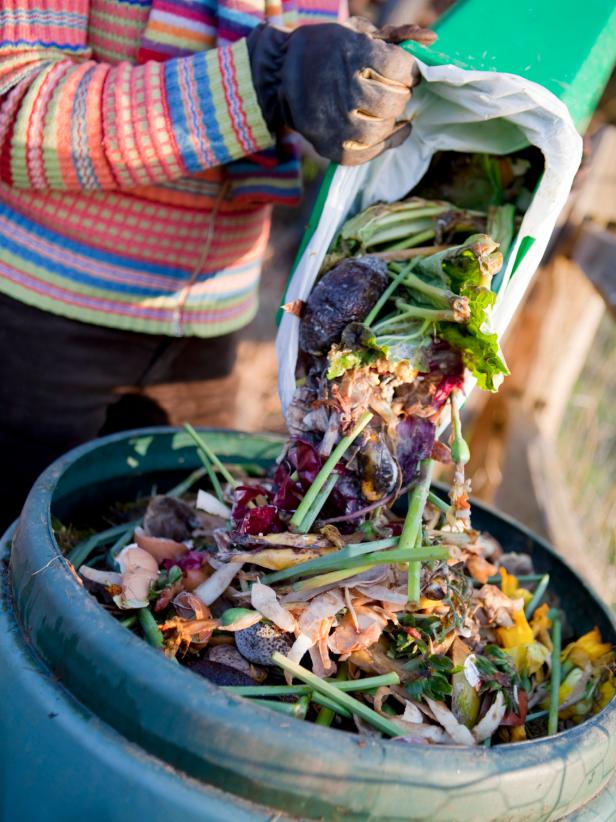
Tools and Materials
- Compost container
- Brown plant materials, such as leaves and straw
- Green plant materials, such as grass clippings and kitchen waste
- High-nitrogen fertilizers, such as blood meal and cottonseed meal
- Hose and Water
- Garden fork or shovel
STEP 1: Choose a Spot
Find a place for your compost that's convenient to your kitchen or garden and has well-drained soil. Although not required, a wire, wood, or plastic container keeps your compost pile looking neat and prevents animals from scattering food scraps. Choose a 3- to 4-foot-wide container that comes apart easily and allows plenty of airflow through to its contents.
STEP 2: Add a Brown Layer
Lay a 4-to 6-inch-thick layer of brown material on the bottom. Carbon-rich dried grass, peat moss, straw, shredded leaves, and other brown plant material make a good base for the pile.
STEP 3: Moisten
Dampen the bottom layer so that it's moist but not soggy. The moisture will help acccelerate the decomposition process by providing the right environment for microbes to break down the material.
STEP 4: Add a Green Layer
Make a second, 2-to 4-inch-thick layer of nitrogen-rich green materials, such as fresh grass clippings or vegetable kitchen scraps. Alternate adding layers of brown and green material until the pile is 3- to 5-feet high (or container is full). Moisten each layer before adding the next.
STEP 5: Cover the Bin
Once all the layers are in and moistened, cover the bin to prevent animals from getting inside or wind from blowing loose material away. During rainy periods, you can cover the top of the bin with a rain-proof tarp to prevent the pile from getting too wet.
As the material begins to decompose, the pile heats up, but not evenly. To ensure that all materials break down, mix the pile and keep it moist. After the center heats up and then cools down (after one to several weeks, depending on the time of year and size and composition of the material), turn the pile. Use a garden fork or shovel to mix the contents, blending the inside and outside materials. Repeat turning the pile once or twice. The compost is ready to use when it's dark and crumbly — usually in a month or two.








